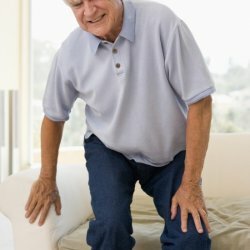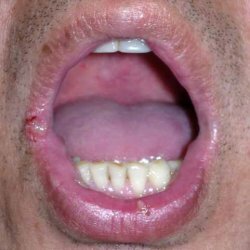Gout: signs and treatment
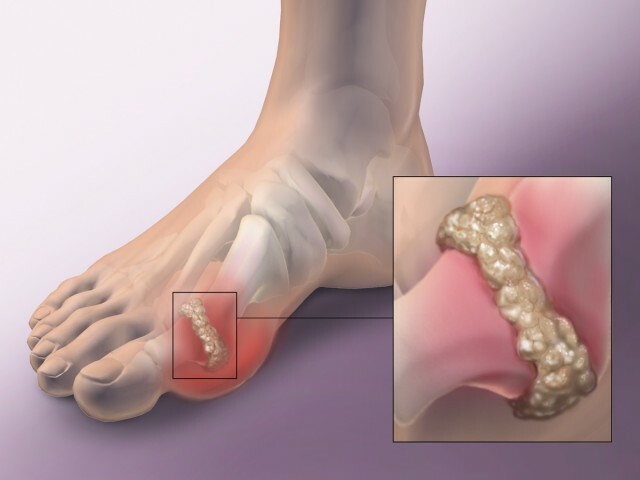
Gout is a disease caused by a metabolic disorder.It develops as a result of the deposition of salts of uric acid in the joints.
This pathology is described by ancient doctors.It was once called "the disease of kings".This is explained by the fact that most of the people who suffered from gout were very wealthy people, whose daily diet included a large number of animal protein( "red meat"), as well as alcoholic beverages.
Table of contents:Features of the disease
Currently, gout is diagnosed relatively rarely;It is detected in only 3% of the population.Mostly it affects men who have reached 40 years of age.
The representatives of the fair sex usually develop gout at the menopause( more often after 55 years), when the synthesis of female sex hormones, estrogens, is dramatically reduced in their body.
Children and young people almost never have gout.In rare cases, the disease can affect the young body if there are congenital disorders of uric acid metabolism.
As a rule, gout is characterized by a chronic paroxysmal course.During an attack, the patient suffers from pain and mobility restriction in problem joints.
Causes of gout
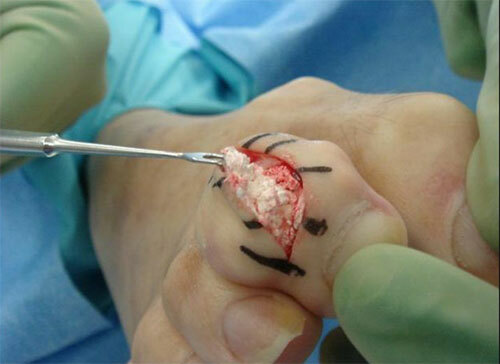
The main factor predisposing to the development of the disease is a stable high level of uric acid in the patient's blood.Its derivatives( urates) are deposited in the form of crystals in the joints, as well as in some other organs( in particular - the kidneys), which causes the development of gout.Such a compound, like sodium urate, has the property of depositing in the joint tissue, with the passage of time leading to its destruction.
A high level of uric acid in gout can be due to its large intake into the body, when even perfectly healthy kidneys can not cope with excretion.Another situation is possible, when the organism receives a normal amount of this compound alimentary, but the functional activity of the kidneys is reduced for one reason or another.
Important: The main source of uric acid is food rich in purines, mainly - animal meat and fish of fatty varieties.
Purine compounds enter the body not only alimentary( with protein food), but also are synthesized endogenously.In the process of metabolism, they are split to uric acid, which is then excreted by the kidneys, i.e., excreted in the urine.With an excess of acid, it and its derivatives are deposited in the form of crystals in tissues, minimally penetrated by blood vessels, such as cartilages and tendons, which leads to the appearance of gout symptoms.
Note: uric acid in normal amounts is needed by the human body.It protects the blood vessels, acting as a powerful antioxidant.
Among the factors predisposing to the development of the disease are:
- genetic predisposition;
- consumes large quantities of protein foods of animal origin;
- overeating;
- inactivity;
- obesity( including against the background of endocrine disorders).
Symptoms of gout
As a rule, the disease begins with an attack of so-called.Gouty arthritis.Initially, the inflammatory process affects only one joint.Usually, first of all the big toe is affected( less often - the ankle or knee joint).The attack usually begins at night or in the morning.Pain appears suddenly;It has a pressing character and is characterized by high intensity.The affected joint swells quickly, and in its projection, there is hyperemia of the skin and a local increase in temperature.
Important: in some cases( with severe seizures), it is possible to have a general increase in body temperature( up to 39 °).
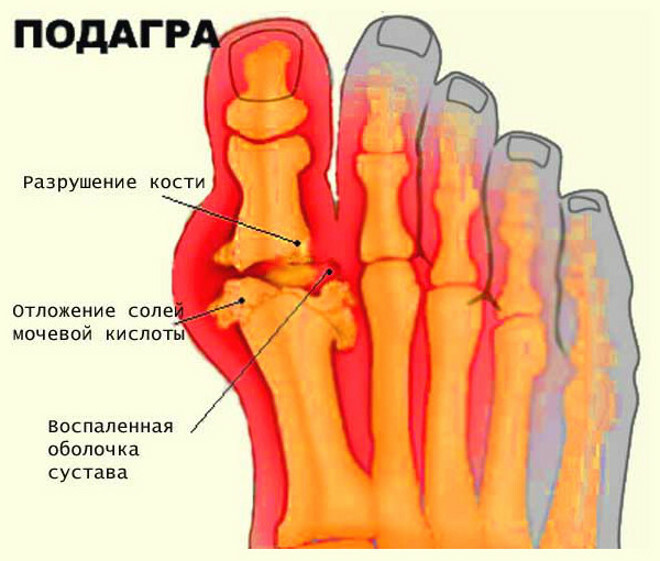
The skin often acquires a "shiny" look.During the day, the intensity of the pain syndrome decreases somewhat, but again increases at night.The total duration of an attack of gouty arthritis can range from 2-3 days to 1-1.5 weeks.With the progression of the process, other joints are affected, the tissue of which, in time, undergoes partial destruction.
Characteristic clinical signs of gout:
- intense periodic paroxysmal pain in one or more joints;
- other symptoms of inflammation( local hyperemia, heat and swelling);
- sharp limitation of mobility in the affected joint;
- the formation of tophi( outgrowths) on the limbs and other parts of the body.
Note: , when breaking characteristic gouty growths, white crystals can be seen.These are deposits of conglomerates of uric acid salts.
Complications for gout
The most common complications of the disease are:
- gouty arthritis( joint damage of inflammatory etiology);
- formation of gouty nodes;
- urolithiasis.
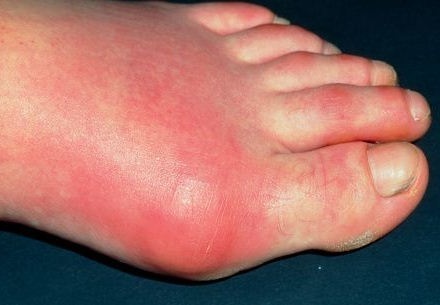
Gouty arthritis is a consequence of the body's immune response, which recognizes crystalline deposits as an alien object.Inflammation develops as a result of migration of a large number of leukocytes to the pathological focus.
Urolithiasis is one of the most serious complications of gout.Its outcome is often renal failure, which in turn can cause death.
Recommended to read:Treatment of gout
 It is almost impossible to completely get rid of this chronic pathology.After the first attack, the disease may not affect itself for a year or more, but this does not mean that the disease has gone by itself.As the progression progresses, the intervals between attacks will inevitably decrease.
It is almost impossible to completely get rid of this chronic pathology.After the first attack, the disease may not affect itself for a year or more, but this does not mean that the disease has gone by itself.As the progression progresses, the intervals between attacks will inevitably decrease.
Important: , while observing a strict diet and other prescriptions of the treating physician, it can be achieved that the gout becomes "dormant", and attacks will be relatively uncommon.
General recommendations for the treatment of gout
When gout is treated at home.Acute seizure is an indication for adherence to strict bed rest.Finiteness, the joints of which are affected by the inflammatory process, it is advisable to keep in a raised position, laying under them something soft( a folded blanket or pillow).
The disease primarily affects small joints, in connection with which, it is necessary to pay increased attention to improving their mobility.It is recommended to take the rule of daily doing gymnastics for the joints, while avoiding excessive loads.Patients should more often take walks in the fresh air, preferably outside the city limits, where the air is contaminated to a lesser extent.If the joints of the foot are affected, the wearing of tight uncomfortable shoes should be discarded.
Drinking mode
For a patient in acute phase, the disease should be consumed as much as possible( at least 3 liters within 24 hours).It is best to drink with alkaline reaction - mineral water or milk.Water with lemon juice helps.It has been experimentally proved that citric acid dissolves urate deposits.
Important: consuming a lot of fluids, you need to monitor daily diuresis( volume of urine leakage).
It is better to somewhat reduce the consumption of food before stopping the attack.Preference should be given to semi-liquid products - cereals and mashed soups.
Drug treatment for gout
You can reduce the pain by attaching an ice pack to the patient's joint.A good effect is achieved by compresses with Dimexide or Vishnevsky liniment.
Of the pharmacological agents, the most effective for stopping the attack or reducing the intensity of the pain syndrome with gout are NSAIDs - non-steroidal anti-inflammatory drugs.Most often doctors recommend Diclofenac.The solution should be administered intramuscularly by 1 ampoule( 3 ml) per day.The course treatment of gout is shown within 5 days.Between injections it is necessary to withstand a time interval of at least 12 hours.
Other drugs of this pharmacological group include Naproxen, Butadion, Indomethacin and Metindol - they can also be prescribed for gout.
Colchicine is very effective for emergency care.An alkaloid of plant origin hinders the crystallization of urates;It must be entered within the first 12 hours after the onset of a gout attack.
Important: the usual analgesic drugs( Analgin, etc.) with a gout attack are practically ineffective.
In order to reduce the level of uric acid and its metabolites as soon as possible, Phoebusostat, Thiopurinol, Allopurinol, Milurit and Hepatocatalazal are used.During the remission of gout for treatment, probenecid can be indicated.Medical products that reduce the content of uric acid in the blood should be prescribed only by an experienced rheumatologist.Self-medication often leads to a worsening of the condition!
Important: patients with severe disease can be shown intravenous injections of the enzyme preparation Peglotisis, which is capable of dissolving urate crystals.The drug is administered 2 times a month under stationary conditions, due to the real danger of developing an anaphylactic shock.The downside of this drug is its high cost.
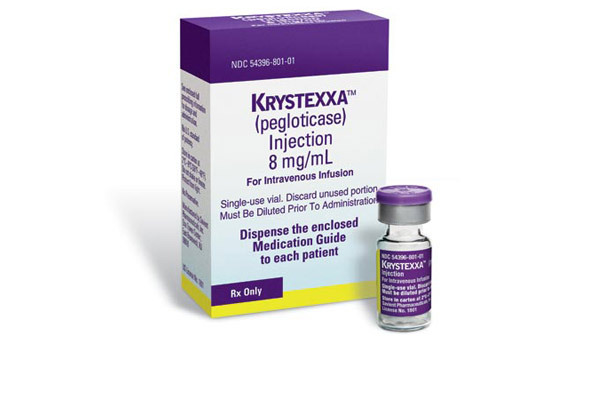
For rapid reduction of inflammation in some cases, hormonal drugs from the group of glucocorticoids - Prednisolone, Cortisone, Hydrocortisone are used.These drugs suppress immunity, so their use is justified when the intended benefit exceeds the possible risk for the patient.
Diet for gout
Recommended to read: 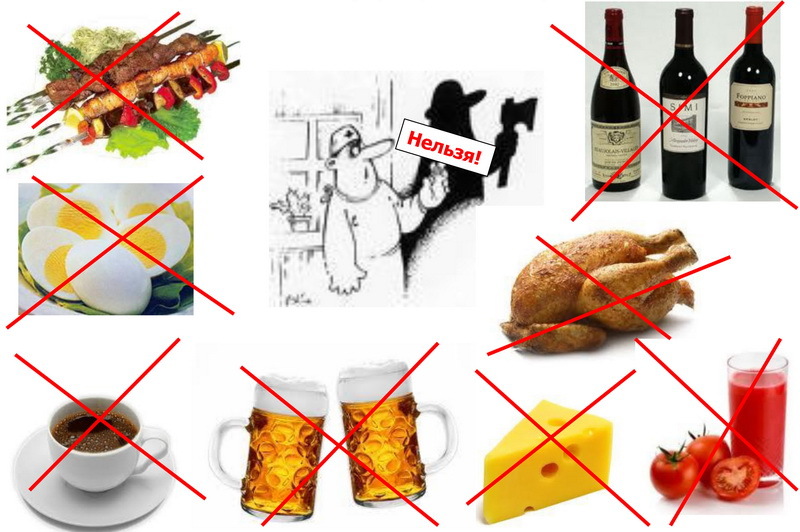
In order to reduce the frequency of seizures, it is necessary to revise your taste preferences and make the nutrition more balanced.Patients are shown the therapeutic diet number 6, which involves reducing the consumption of meat products, fatty fish, mushrooms, marinades, smoked products, sorrel, cauliflower, legumes and chocolate and introducing a large amount of milk, cheese, vegetables, fruits, whole grains and cereals in the diet.
Important: animal protein is a sick gout you can consume no more than 120 grams per day!
The excretion of uric acid in the urine of people suffering from nicotine addiction and consuming alcoholic beverages is much slower, so cigarettes and alcohol( especially beer) will have to be abandoned.
It is advisable to reduce or completely eliminate the consumption of such beverages as "powder"( reconstituted) juices with fructose, strong tea, coffee, cocoa and soda with sodium benzoate.
At least once a week you need to arrange "unloading days", during which you must adhere to the "mono-diet" with the consumption of a single product.Completely hungry days are categorically excluded!
Treatment of gout with folk remedies
For topical use, traditional medicine recommends an ointment based on unsalted butter at home.The oil should be melted on low heat until the foam appears and pour in it the same amount of ethanol.The resulting mixture must be ignited and wait until all alcohol is burned out.The finished product is poured into a clean container and stored in a refrigerator.When the next attack begins, the ointment should be rubbed into the affected joint, being in front of the heat source.
An onion soup is also considered an effective folk remedy in the treatment of gout.On 3 bulbs you need to take 1 liter of water and cook over low heat until the onion is completely boiled.The broth should be cooled, drain and take inside 200 ml 3 times a day before meals.The duration of the course is 2 weeks.
Useful for gout and foot baths with iodine.To 3 liters of warm water add 3 tsp.Sodium bicarbonate( food soda) and 9 drops of iodine.Regular procedures with this type of treatment contribute to reducing the amount of salt deposits.
Another recipe for folk remedies for treating gout: on 5 tablets of acetylsalicylic acid( Aspirin), take 10 ml of 5% alcohol solution of iodine.After mixing, an absolutely clear liquid must be obtained, which must be rubbed into the diseased joints in the evening before bedtime.On hands or feet after rubbing, wear warm mittens or socks.
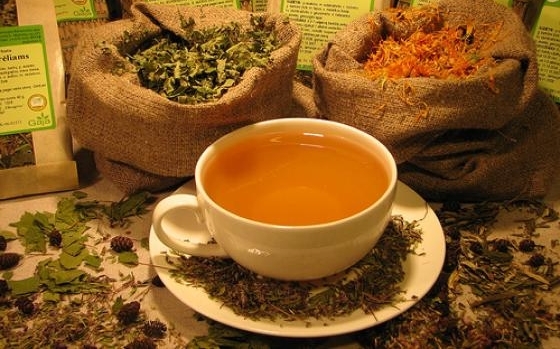
Among other folk remedies for gout are tincture of lilac flowers, infusion of cowberry leaves and compresses based on decoction of fresh spruce or pine needles.
Plisov Vladimir, medical reviewer

